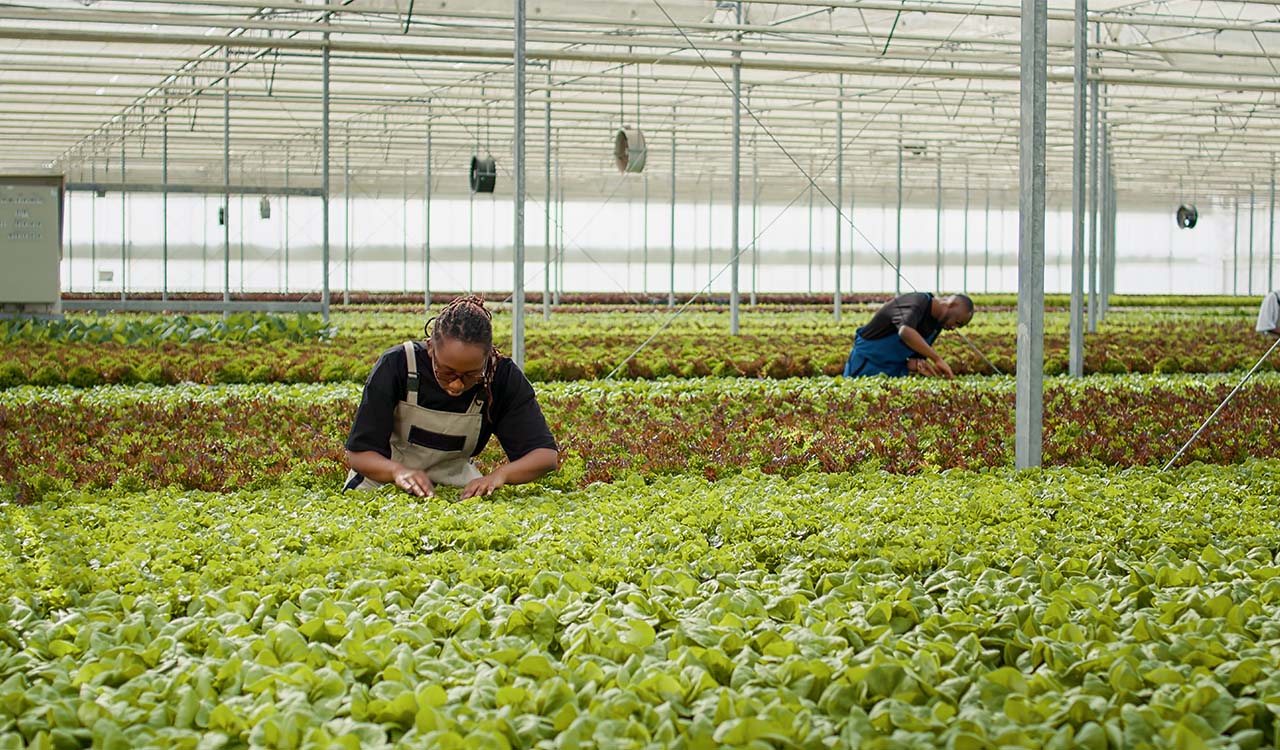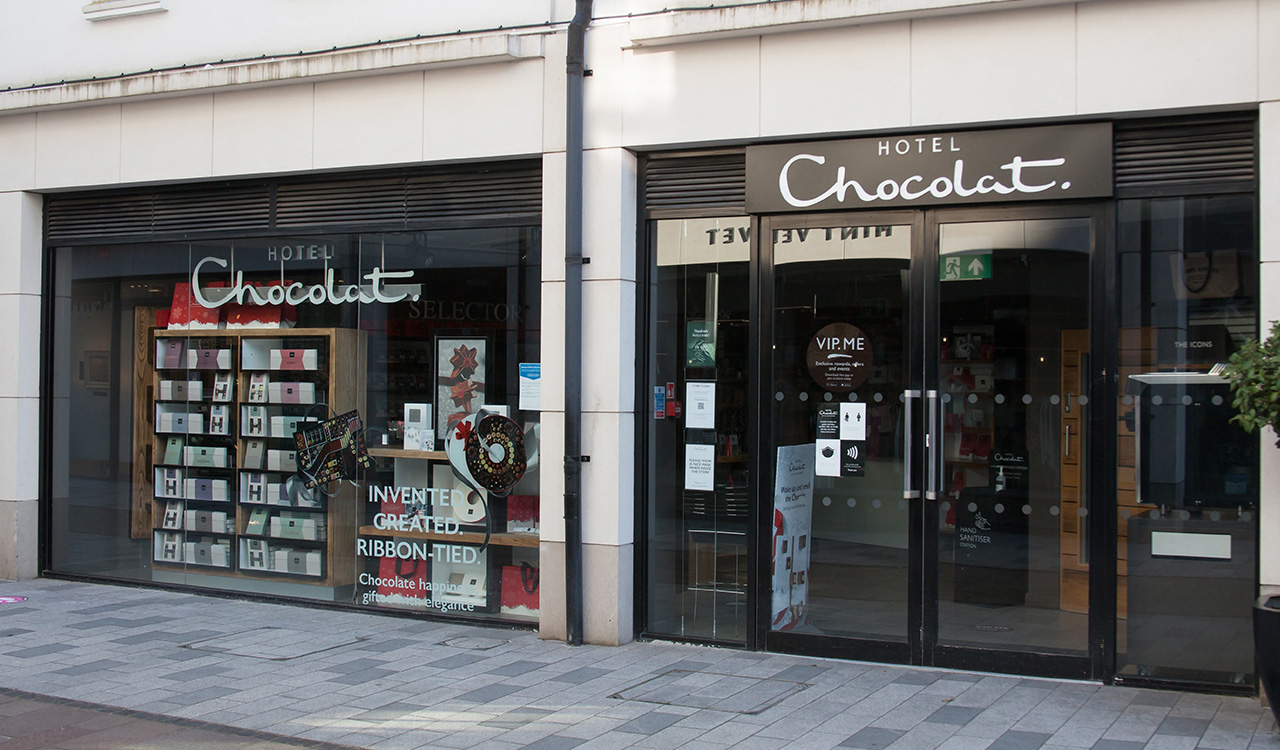Japan has been at the forefront of innovative sustainability practices, and its supermarket industry is no exception. A growing trend among Japanese supermarkets is the integration of rooftop greenhouses in controlled environment agriculture (CEA), where fresh produce is grown and sold directly to consumers. This practice not only reduces the carbon footprint associated with food transportation but also strengthens the connection between consumers and their food sources. Supermarkets like Ito Yokado, Aeon, and Life Corporation have embraced this model, setting a new standard for sustainable retail supermarkets.
The visible nature of greenhouse farming on top of a supermarket creates powerful storytelling opportunities. Many stores offer viewing areas or tours where customers can see their food being grown, creating emotional connections that drive loyalty and transcend price.
Rooftop Greenhousing
The Japanese government has been supportive of urban farming initiatives, offering subsidies and incentives to businesses that adopt sustainable practices. This support, combined with growing consumer demand for locally grown, eco-friendly products, suggests that rooftop greenhouses will become increasingly common in the years to come.
In 2019, Ito Yokado opened a rooftop greenhouse at one of its stores in Tokyo. They are a major Japanese retail chain owned by Seven & i Holdings, best known for owning 7-Eleven convenience stores. Their “Seven Farm” concept integrates rooftop cultivation with their existing distribution networks. At their Tokyo-Mitaka location, customers can watch produce being harvested through glass panels before purchasing it minutes later. The greenhouse grows leafy greens like lettuce and herbs, and this initiative ensures peak freshness and allows customers to see exactly where their food comes from.
Aeon, one of Japan’s largest retail groups with over almost 18,000 stores globally, has invested heavily in urban farming with their Aeon Farm initiative including in flagship stores in Tokyo, Chiba and Osaka. Aeon’s rooftop greenhouses use high-tech hydroponic systems to grow produce efficiently, using less water and no soil. The company has also incorporated solar panels on some of its rooftops, further enhancing the sustainability of its operations.
Life Corporation, another prominent supermarket chain, has taken a slightly different approach. Instead of large-scale greenhouses, Life has introduced smaller, modular farming units on its rooftops. These units are designed to grow a variety of produce, from strawberries to tomatoes, and are managed with the help of advanced CEA technology, including IoT sensors and automated irrigation systems.
But wait! There’s more:
- In Montreal, Canada’s largest organic vegetable garden is 29,000 square feet, sits on the rooftop of the IGA Famille Duchemin supermarket, and grows over 40 different foods including vegetables, herbs, fresh garlic, salad greens, cherry tomatoes and turnips.
- REWE, Germany’s second-largest supermarket chain with over 3,700 stores built its Market of the Future in Wiesbaden with a rooftop aqua farm that produces around 22,500 pounds of fresh fish and a garden with 800,000 basil plants that are sold in the store downstairs.
- Here in the U.S., Fruit Fair supermarket in Chicopee, Massachusetts, which promotes low-cost fresh produce installed three 1,200 square foot greenhouses on their roof to grow organic vegetables to sell in their store to improve food security for their customers.
- Whole Foods partnered with Gotham Greens to put a hydroponic greenhouse on top of one of their Brooklyn, New York stores and supplies fresh greens to the store and local restaurants in the area.
The Rooftop Greenhouse Model: A Win-Win for Sustainability
Rooftop greenhouses are a brilliant solution to several challenges faced by urban areas, including limited space, food miles, and the need for fresher produce. By utilizing unused rooftop spaces, supermarkets can grow vegetables, herbs, and fruits on-site, reducing the need for long-distance transportation. This model aligns with Japan’s broader sustainability goals, such as reducing greenhouse gas emissions and promoting local food production. These rooftop operations aren’t simply traditional greenhouses placed on buildings. They represent sophisticated growing environments that leverage advanced agricultural technology.
Most employ hydroponics or aeroponics systems that use a fraction of the water required for conventional farming. Computer-controlled environments optimize light, temperature, and nutrient delivery, resulting in consistent quality regardless of weather conditions. Many systems incorporate AI and IoT sensors to monitor plant health and adjust growing conditions automatically. The environmental benefits of rooftop greenhouses are significant:
- Reduced Food Miles: Transporting produce from rural farms to urban supermarkets generates substantial carbon emissions, increases costs and depending on where the produce is grown and transported from, can shorten its shelf life. California produces over half of the nation’s fruits and vegetables followed by Florida, Washington, Idaho and Arizona. The U.S. imports approximately 59 percent of its fresh fruit supply and about 35 percent of fresh vegetables; with the majority of fruit coming from Mexico and Chile. By growing food on-site, supermarkets can drastically cut down on emissions and improve the produce they sell.
- Fresher Produce: Produce reaches customers within hours or even minutes of harvesting. This results in preserving peak flavor, better taste, and more nutritious food for consumers.
- Efficient Land Use: In densely populated cities like Tokyo and New York City space is at a premium. Rooftop greenhouses make use of otherwise unused spaces, contributing to urban sustainability.
- Water and Energy Efficiency: Many rooftop greenhouses use hydroponic or aeroponic systems, which require significantly less water than traditional farming and typically 70-90 percent less than conventional farming and require far fewer pesticides, if any. Some supermarkets already integrate renewable energy sources, such as solar panels, to power their greenhouses.
- Brilliant Marketing: The visible nature of greenhouse farming on top of a supermarket creates powerful storytelling opportunities. Many stores offer viewing areas or tours where customers can see their food being grown, creating emotional connections that drive loyalty and transcend price.
Challenges and Considerations
While the rooftop greenhouse model offers numerous benefits, it is not without challenges. Initial setup costs can be high, particularly for advanced CEA hydroponic or aeroponic systems. Additionally, maintaining a greenhouse requires specialized knowledge and skills, which necessitates hiring or training staff. One benefit of Whole Foods’ partnership with Gotham Greens is that the store isn’t involved in farming practices, which is a good model for other retailers.
Weather conditions can also pose a challenge. In Japan, typhoons and extreme temperatures can affect greenhouse operations. Many supermarkets have addressed this issue by using controlled-environment agriculture (CEA) technologies, which allow for precise regulation of temperature, humidity, and light levels. In California, the problems are different as earthquakes can create major disturbances and damages to greenhouses.
Another consideration is the scale of production. While rooftop greenhouses are ideal for growing leafy greens and herbs, they may not be able to produce enough to meet all of a supermarket’s needs. As a result, most supermarkets still rely on traditional suppliers for the majority of their produce.
Supermarkets Are Trailblazers
In summary, supermarkets are leading the way in sustainable food retail by integrating rooftop greenhouses into their operations. These retailers have demonstrated that it’s possible to grow fresh, high-quality produce in the heart of the city, reducing food miles and enhancing sustainability. While challenges remain, the benefits of this model are clear, and its potential for growth here in the U.S. is enormous.
As consumers become more conscious of their environmental footprints, the demand for locally grown, sustainably produced food will only increase. By embracing rooftop greenhouses, supermarkets are not only meeting this demand but also setting an example for retailers worldwide. Consider this: The average Walmart Supercenter is 187,000 square feet; let’s assume that 170,000 of roof space is usable for a greenhouse.
The average American consumes 9.22 avocados per year, 90 percent of which are imported and could be subject to tariffs. Just one Walmart Supercenter rooftop greenhouse could yield 40,780 avocados per year, according to reports from California Avocados Growers, which would harvest enough avocados for 4,423 shoppers for a year. Coincidentally, the average Walmart Supercenter serves 3,500 to 4,000 shoppers on a weekly basis.
The rooftop greenhouse trend is a testament to the power of creativity and CEA technology in addressing some of the most pressing challenges of our time – feeding our population and reducing the U.S.’s dependency on imported foods. During the pandemic, grocery retailers invested heavily in technology, ecommerce platforms, plastic shields and even cart-washing equipment to protect their shoppers and supply sources. Now is the time for grocers to put a greenhouse on top of every supermarket in the country! It’s a win for all stakeholders.





